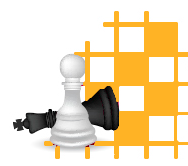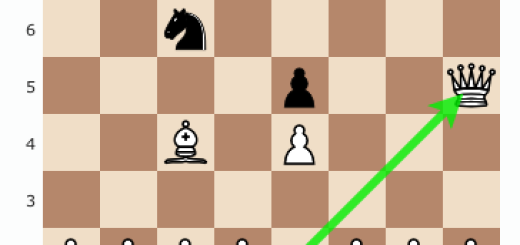How to “Castle” in Chess: The Rules & Strategy of Castling in Chess
How to “Castle” in Chess:
The Rules & Strategy of Castling in Chess
In the game of chess, it is recommended to “castle” as soon as possible. Understanding how to castle in chess and the rules of castling in chess becomes a great advantage.
Chess involves a great deal of thinking, skill, and patience. Unlike most games, the game of chess has a variety of different moves for each chess piece. What’s more, some very specific chess pieces have “special” moves. As covered briefly in the Beginner’s Guide to Chess”, these pieces include the King and the Rook, who together, can perform a chess move known as castling.
For an inexperienced player, this move, known as “castling”, may seem almost like cheating, but when performed correctly, is a highly valuable and legal move in the game of chess. First, we’ll cover how to correctly castle in chess. After, we’ll cover the specific rules of castling and why a player would want to castle.
How to Castle in Chess
The castling move is the only move in the game of chess that allows a player to move 2 pieces at once. These two pieces are the King & the rook.
What is the castling move? The castling move is when the King is moved 2 spaces toward a rook and the rook then moves to the other side of the King.
All spaces must be free between the King & the castling rook. To castle to the left, the knight, bishop, and queen must be moved. To castle to the right, the bishop and knight must be moved. Also, these spaces cannot be occupied by an opponent’s pieces.
Below is a demonstration of the castling move in action. As you can see, the King can move either 2 spaces to his left or right, and the rook will then move to the opposite side. When castling to the left, it is known as castling “Queen Side”. When castling to the right, it is known as castling “King Side”. 
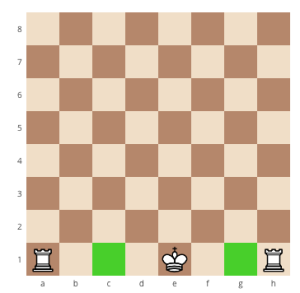
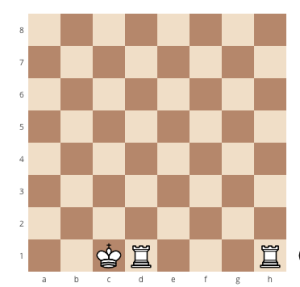
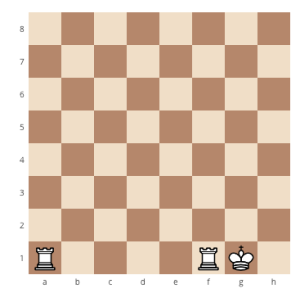
The Rules of Castling
Castling can be a very strategic move in the game of chess. However, unlike most chess moves, it can only be done under very specific terms. In order to castle in chess, there are 5 rules to be followed. A player can perform the castling move when:
- The King has not moved
- The King is not in check
- The King does not move through or into check
- There are no pieces between the King & the castling Rook
- The castling rook has not been moved.
This means if you have moved either your King or the rook at any point in the game, you CANNOT castle. If you haven’t moved your King, and have moved one rook, you can only castle with the rook that you have not moved. If there is an enemy piece in any direct line of the castling, and no pawns are in the front line, the castling move can also not be performed.
When playing online, the computer will automatically track this. When playing in person, you and your opponent will have to keep an eye out for these things. In the scenario below, the King could only castle to his left, as there is a knight blocking the castle move on the right. 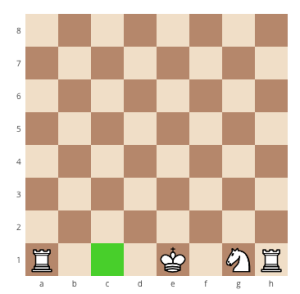
Benefits of Castling in Chess
You may be wondering “Why bother castling in chess?” or “What is the point of castling in chess?”. I know I use to wonder this when I was first learning the game. While my opponent’s would always perform this move, I never used this move until a few months into learning the game of chess. Once I started performing the castling move, I noticed a dramatic increase in my ability to defeat opponent’s. Let’s cover some of the benefits of castling in chess.
-
Your King Can Immediately Be Moved Out of Danger
While it pays to have a few pieces near your King who can defend attacks, when a castling move is available, your king can immediately be placed out of danger, and protected by a rook. Imagine your opponent will be able to place your king in check in the next move (remember, once the king is in check you can’t castle). You can perform the castling move and immediately have the King out of harm’s way.
-
You’ll Have More Control of the Center of The Board
As I wrote about in “How To Play Chess 101: The Beginner’s Guide To Chess Rules & Chess Strategy” whoever has control of the board has control of the game, or at least that’s how the saying goes. When the castling move is performed, your rook is immediately place closer to the center, and if there are no pawns blocking, can now capture any enemy opponent’s in the rook’s line of fire.
-
It Can Prevent Pawn Exchanges
Most pawn exchanges occur near the center of the board. As the pawn attacks diagonally, and it’s better to have pieces in the center, this would make sense. When the castling move is performed, rather than having the king in a vulnerable position to having to attack a pawn in order to prevent an exchange, your rook can be placed to prevent a pawn exchanges instead.
General Castling Strategy
- 1. Only castle when it works to your advantage. When you first learn the move, it may be tempting to do it just for fun. Only use the move when it works to your advantage, such as protecting your king or moving your rook closer to the center of the board for a stronger offense.
- 2. The best time to castle is once your opponent has already established an offensive attack. By castling, it can throw off your opponent and give you an advantage.
- 3. Castle when the center of the board is open. When the center of the board is open, your king is vulnerable and this will move him to safety.
- 4. Castle on the side which has less of your opponent’s major pieces. If your player has loaded their pieces to the left side of the board, castle right. If they have loaded most of their pieces to the right side of the chessboard, castle left.
- 5. When in doubt, castle kingside. It is generally agreed by experienced chess players that it is best to castle kingside, as it is quicker with fewer pieces.
Castling FAQ
1. Can you castle if the King has been placed in check but has not been moved?
Yes. As long as the King did not move to get out of check (say another chess piece of yours blocked the check move), then the castling move is still legal.
2. Can the castling move be used to capture opponent’s pieces?
No. Neither the King nor rook can capture opponent’s pieces when castling. The move can only be used to relocate your chess pieces.
3. Can Queens Castle?
No, a queen cannot castle. Only the King and the rook.
Learn More:
Learn Chess 101: Learn How to Play Chess, the Rules of Chess & Basic Chess Strategy
Learn How to Win Chess in 2 Moves (Fool’s Mate/2 Move Checkmate)
Learn How to Win Chess in 3 Moves (3 Move Checkmate)

